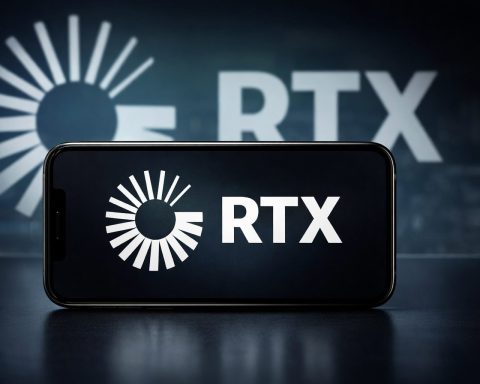Consumer Electronics: Foldables, Phones & Wearables Reinvented
- Samsung’s Foldable Frenzy: Samsung held its second Galaxy Unpacked event of 2025 in New York, unveiling the Galaxy Z Fold 7 and Galaxy Z Flip 7 foldable smartphones, alongside a cheaper Z Flip 7 FE model and the new Galaxy Watch 8 series [1]. The Fold 7 is dramatically slimmed down – about 26% thinner and 10% lighter than its predecessor – yet boasts a larger 6.5-inch cover display and 8-inch inner screen [2]. “Foldable phones…offer a unique, differentiated experience,” Samsung’s mobile chief claimed, positioning these devices for mainstream appeal. However, analysts note foldables remain a niche (~1.5% of smartphones) due to high prices (the Fold 7 starts at $1,999, ~5% more than last year) [3] [4]. By introducing the sub-$900 Flip 7 FE, Samsung is signaling a push to broaden foldable adoption despite competition from Chinese rivals like Huawei and Honor.
- Other Gadget Highlights: Outside of phones, Sony made noise with new noise-canceling headphones for NFL coaches, and LG refreshed its ultralight Gram laptop line – proving that “thin is still in” for portable PCs. Meanwhile, tech enthusiasts are buzzing over Apple’s upcoming fall lineup (new iPhones and possibly an Apple Watch refresh), as the industry anticipates Apple’s Vision Pro AR headset launch to kick off a new era of spatial computing (distinct from AI). In short, consumers can expect sleeker designs, specialty devices for unique use cases, and ever-innovative hardware upgrades in 2025’s gadget scene.
Software and Apps: Social Wars & Platform Shake-ups
- Threads vs. Twitter (X) – Social Showdown: Meta’s Twitter-like app Threads is experiencing explosive growth and closing in on Elon Musk’s X (formerly Twitter). In June 2025, Threads hit 115 million daily active mobile users, up 128% year-over-year, while X stagnated at ~132 million (down 15%) [5]. This stunning rise – achieved in less than one year since Threads’ launch – suggests Meta’s Instagram-linked strategy is paying off. “Threads could become a significant competitor for X,” notes TechCrunch, stealing user attention (and advertising dollars) as Twitter struggles with sagging growth [6] [7]. Rival upstart Bluesky also saw a surge (372% YoY) after chaos on X, but remains small (~4 million dailies) [8]. The social media landscape is thus in flux: Meta CEO Mark Zuckerberg is openly celebrating Threads’ momentum, while Musk has reinstated controversial figures on X to shore up engagement. Users can expect a heated feature race – from improved web apps to elusive “edit” buttons – as these platforms vie for supremacy in the post-Twitter era.
- App & OS Updates: In other software news, Microsoft is rolling out its Windows 11 “25H2” update amid rumors that Windows 12 has been pushed to 2026. Google is beta-testing Android 16, which comes pre-loaded on Samsung’s new devices, bringing refinements in privacy and performance. And Meta isn’t stopping at Threads – the company is integrating new shopping tools into Instagram and launching a revamped WhatsApp for Business app. Meanwhile, regulators continue scrutinizing app stores: the EU’s DMA law is forcing Apple to allow alternative app stores on iOS, a seismic shift expected next year. All told, the software world (sans AI) is focusing on user growth, platform openness, and feature refinement to keep us all hooked and productive.
Cybersecurity and Data Privacy: Threats, Breaches & Warnings
- Critical “Citrix Bleed 2” Vulnerability – Patch Now: A severe new security flaw (CVE-2025-5777) nicknamed “Citrix Bleed 2” is under active exploitation, prompting urgent action from U.S. cyber officials. The bug, in Citrix’s widely used NetScaler ADC gateways, allows attackers to steal sensitive data from memory without authentication [9] [10]. The U.S. Cybersecurity & Infrastructure Security Agency (CISA) confirmed ongoing attacks and gave federal agencies an unprecedented 24-hour deadline to apply patches [11]. “Apply mitigations…or discontinue use of the product if mitigations are unavailable,” CISA warned in a stark advisory [12]. Security researchers had released proof-of-concept exploits in early July, and by mid-July hackers were actively leveraging the flaw to hijack VPN sessions [13] [14]. Organizations worldwide are racing to update their Citrix systems, underscoring the constant vigilance required as new zero-day vulnerabilities emerge.
- High-Profile Breaches and State-Sponsored Havoc: Major companies continue to grapple with data breaches, exposing customer and employee data. Luxury fashion house Louis Vuitton revealed that hackers breached a third-party vendor to access a customer database in multiple countries. The attack, undetected for weeks, affected about 142,000 clients in Turkey and also hit Louis Vuitton’s South Korea and UK operations [15] [16]. Exposed information included names, contact details and other personal data (no payment info), prompting the company to warn customers against phishing attempts [17]. This breach comes on the heels of similar attacks on brands like Dior, Tiffany, Victoria’s Secret, and Adidas, which authorities link to a hacking group dubbed “Scattered Spider” targeting the retail sector [18]. At the same time, state-aligned cyber threats are ramping up: an Iran-backed ransomware gang known as Pay2Key.I2P resurfaced after years of dormancy, now offering criminal affiliates an unusually high 80% cut of ransom profits to attack organizations in the U.S. and Israel [19] [20]. “We are ready to offer a favorable percentage for anyone engaged in an attack against the enemies of Iran,” the group advertised in a darknet forum, framing hacking as patriotic duty [21]. The campaign, tied to Iran’s state-sponsored Fox Kitten crew, has already netted over $4 million in extortion payments in just four months [22]. From corporate espionage to geopolitical cyberwarfare, the non-AI cyber landscape in mid-2025 is as fraught as ever – demanding robust defenses and international cooperation to combat everything from ransomware to data leaks.
Space and Aerospace: Launch Landmarks and Lunar Prep
- SpaceX’s 500th Launch – Rocket Reusability Record:SpaceX hit a historic milestone, launching its 500th Falcon 9 rocket since the workhorse vehicle’s 2010 debut. The July 1 mission carried 28 new Starlink internet satellites into orbit and set a booster reuse record – the first stage flew for the 29th time and landed successfully yet again [23]. This remarkable cadence highlights SpaceX’s dominance in commercial launch and its aggressive push toward rapid reusability. Just weeks later, SpaceX’s Falcon 9 lofted another batch of Starlink satellites (one of several launches this month), further expanding the constellation that now approaches 5,000 satellites in orbit. SpaceX’s next big leap, the Starship mega-rocket, is waiting in the wings for its next test flight as the company navigates regulatory hurdles after its explosive April 2023 attempt.
- New Rockets & Moon Gear: Traditional rivals are racing to catch up in the launch market. United Launch Alliance (ULA) has begun stacking its first Vulcan Centaur rocket for a long-delayed inaugural mission [24]. Slated for late summer, this mission – carrying a payload for the U.S. Space Force – will be a crucial test of ULA’s Vulcan as a successor to the retired Atlas V. (Vulcan’s debut was postponed after a test anomaly in 2023, so all eyes are on whether ULA can finally deliver.) In the human spaceflight arena, NASA and its partners are busily preparing for Artemis lunar missions: Axiom Space announced a partnership with eyewear brand Oakley to develop high-tech visors for Artemis spacesuits, aiming to give astronauts better glare protection and visibility on the Moon [25]. Meanwhile, NASA’s Artemis program got a boost in Washington, with a new budget bill funding the Artemis III Moon landing preparations and even the relocation of a retired Space Shuttle for public display [26]. On the International Space Station front, NASA and SpaceX set July 31 for the Crew-11 launch – notable as the first reuse of a Crew Dragon capsule for a sixth flight to orbit [27]. And in a surprise leadership shuffle, former U.S. Transportation Secretary Sean Duffy was appointed Interim NASA Administrator on July 10, after the previous nominee’s withdrawal [28]. From cutting-edge rockets to Moon-bound hardware, it’s been a packed month in aerospace, with both private and public players reaching for the stars (and the Moon).
Renewable Energy and Green Tech: Clean Power Records & Climate Tech
- India’s Clean Energy Milestone: India announced that 50% of its installed electricity capacity now comes from non-fossil fuel sources, hitting this clean energy benchmark five years ahead of its 2030 target under the Paris Agreement [29]. This achievement – which includes solar, wind, hydro, and nuclear capacity – underscores India’s rapid renewables growth. In the first half of 2025, India’s renewable power output rose at its fastest pace since 2022, even as coal generation declined ~3%, reflecting a significant shift in the country’s energy mix [30]. India added ~28 GW of solar and wind in 2024 and another 16 GW in just the first five months of 2025 [31]. Government officials noted this momentum puts India on track toward its ambitious goal of 500 GW non-fossil capacity by 2030 [32]. To build on the progress, India is pushing initiatives in battery storage, recycling of solar panels/wind turbines, and green hydrogen production – essential steps to deepen decarbonization and ensure renewable reliability [33]. The milestone also sends a strong message globally: a huge developing economy can scale up clean power quickly, though India still plans to expand some coal plants in the near term to meet skyrocketing electricity demand [34].
- Big Tech Bets on Green Energy: In the United States, a landmark clean power deal was inked on July 15: Google agreed to purchase up to 3 gigawatts of hydropower in a ~$3 billion pact – the world’s largest corporate clean energy purchase of its kind [35]. Under 20-year agreements with Brookfield Renewable, Google will source electricity from two hydroelectric facilities in Pennsylvania to run its energy-hungry data centers on carbon-free power [36]. The tech giant is also reportedly investing $25 billion to expand data centers in several states over the next two years, underscoring how critical reliable clean energy is for its operations. This massive hydropower deal reflects a broader trend of Silicon Valley doubling down on renewables to power cloud computing and data AI services (which are driving up power consumption to record highs in the U.S.) [37]. Elsewhere, Europe saw a policy boost for green tech: the UK moved to reform its grid connections to speed up wind farm projects, and the EU approved new incentives for battery gigafactories. And in the automotive realm, electric vehicle sales continue to climb – China is on pace to sell more EVs than gas cars in 2025 for the first time, thanks to affordable models and government support. All these developments point to an accelerating global pivot toward clean energy and sustainable technology, even as policymakers juggle energy security concerns and industry lobbying.
Internet Infrastructure and Telecommunications: Next-Gen Networks & Global Connectivity
- 6G on the Horizon – First Trials Underway: Even as 5G networks mature, telecom innovators are already laying groundwork for 6G. In Japan, SoftBank became the country’s first carrier to launch an outdoor 6G trial using the 7 GHz band (a high-frequency “centimeter-wave” spectrum) in downtown Tokyo [38] [39]. Partnering with Nokia, SoftBank installed three experimental 7 GHz base stations in the busy Ginza district to test Massive MIMO antennas and compare coverage to existing 5G networks [40]. The 7–24 GHz range (dubbed FR3 by industry standards) is a candidate for 6G because it offers huge bandwidth (enabling ultra-fast speeds) while still propagating better than millimeter waves [41] [42]. Early results are promising – engineers aim to prove that 7 GHz signals can provide reliable citywide coverage similar to today’s sub-6 GHz 5G, but with far greater capacity. This trial, one of the first of its kind, highlights the global race toward 6G: standardization work begins in earnest later this year, with countries like Japan, South Korea, and the US vying for leadership in next-gen wireless. (Experts predict 6G rollout by 2030, potentially enabling futuristic applications like truly immersive XR and vehicle-to-everything communications.) For now, it’s all experimental – but the 6G era is visibly on the way.
- Starlink Scales Up and Competitors Loom: On the internet connectivity front, space-based broadband keeps growing. SpaceX’s Starlink constellation surpassed 4,500 active satellites after multiple launches this summer, extending its lead as the world’s largest satellite network. With each Falcon 9 mission delivering dozens of Starlinks to orbit, SpaceX is steadily improving coverage and capacity for its low-latency internet service – especially in remote and rural regions. The company achieved a milestone with its 500th Falcon 9 launch this month, a Starlink mission that also broke reuse records (29 flights by one booster) [43]. Starlink’s rapid expansion is pressuring rivals: Amazon’s Project Kuiper is preparing to launch prototype satellites later in 2025, aiming to eventually deploy over 3,000 satellites of its own to compete in satellite internet. Traditional telecom is responding in kind – for example, OneWeb (now merged with Eutelsat) completed its first-gen LEO network and is focusing on enterprise and government connectivity. Back on Earth, telecom firms are investing in fiber optics and 5G Advanced upgrades while eyeing the 6G future. In the U.S., major carriers agreed to adopt Tesla’s NACS EV charging connector as a potential industry standard – a slightly different kind of “connector” news, but indicative of cross-sector tech convergence. Overall, July 2025 finds the internet’s infrastructure in a transformative phase, from the stratosphere to the ocean floor: satellite swarms beaming broadband globally, new undersea cables connecting continents (Google and Meta’s latest transpacific cables just went online), and carriers testing technologies that will define connectivity for the next decade. The world is more connected than ever, and the race to deliver even faster, smarter networks – without leaning on AI – is full steam ahead.
Sources: [44] [45] [46] [47] [48] [49] [50] [51] [52] [53] [54] [55] [56] [57] [58] [59] [60] [61] [62] [63] [64] [65] [66] [67]
References
1. www.techradar.com, 2. www.reuters.com, 3. www.reuters.com, 4. www.reuters.com, 5. techcrunch.com, 6. techcrunch.com, 7. techcrunch.com, 8. techcrunch.com, 9. www.bleepingcomputer.com, 10. www.bleepingcomputer.com, 11. www.bleepingcomputer.com, 12. www.bleepingcomputer.com, 13. www.bleepingcomputer.com, 14. www.bleepingcomputer.com, 15. therecord.media, 16. therecord.media, 17. therecord.media, 18. therecord.media, 19. therecord.media, 20. therecord.media, 21. therecord.media, 22. therecord.media, 23. spaceflightnow.com, 24. spaceflightnow.com, 25. spaceflightnow.com, 26. spaceflightnow.com, 27. spaceflightnow.com, 28. spaceflightnow.com, 29. www.reuters.com, 30. www.reuters.com, 31. www.reuters.com, 32. www.reuters.com, 33. www.reuters.com, 34. www.reuters.com, 35. www.reuters.com, 36. www.reuters.com, 37. www.reuters.com, 38. www.softbank.jp, 39. www.rcrwireless.com, 40. www.rcrwireless.com, 41. www.rcrwireless.com, 42. www.rcrwireless.com, 43. spaceflightnow.com, 44. www.reuters.com, 45. www.reuters.com, 46. www.reuters.com, 47. www.reuters.com, 48. www.techradar.com, 49. techcrunch.com, 50. techcrunch.com, 51. www.bleepingcomputer.com, 52. www.bleepingcomputer.com, 53. therecord.media, 54. therecord.media, 55. therecord.media, 56. therecord.media, 57. spaceflightnow.com, 58. spaceflightnow.com, 59. spaceflightnow.com, 60. spaceflightnow.com, 61. spaceflightnow.com, 62. www.reuters.com, 63. www.reuters.com, 64. www.reuters.com, 65. www.reuters.com, 66. www.rcrwireless.com, 67. www.rcrwireless.com










